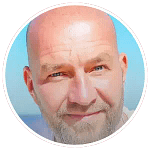
At Holina, we understand that that when it comes to a long-term successful recovery, addiction treatment in residential rehab is only the beginning. But it’s such an important beginning!.
It’s time to get back to yourself.
The NeuroAffective Relational Model (NARM) is an advanced clinical training for mental health professionals who work with complex trauma. NARM is a cutting-edge model for addressing attachment, relational and developmental trauma, by working with the attachment patterns that cause life-long psychobiological symptoms and interpersonal difficulties. These early, unconscious patterns of disconnection deeply affect our identity, emotions, physiology, behaviour and relationships. Learning how to work simultaneously with these diverse elements is a radical shift that has profound clinical implications for healing complex trauma. As such, NARM is positioned to become an invaluable treatment option for the Trauma-Informed Care movement as we gain a greater understanding of the nature of adverse childhood experiences (ACEs).
This developmentally-oriented, neuroscientifically-informed model emerged out of earlier psychotherapeutic orientations including Psychodynamic Psychotherapy, Attachment Theory, Cognitive Therapy, Gestalt Therapy, and Somatic Experiencing®, and bridges traditional psychotherapy with body-mind approaches within a context of relational practice. NARM is a mindfulness-based clinical treatment, as its method is grounded in a phenomenological approach to addressing identity and consciousness of Self – who we truly are beneath these patterned ways of relating to ourselves and the world. Seen in this way, healing complex trauma is a vehicle for transformation on a personal, spiritual and collective level.
In recent years the role of self-regulation has become an important part of psychological thinking.
The NeuroAffective Relational ModelTM (NARM) brings the current understanding of self-regulation into clinical practice. This resource-oriented, non-regressive model emphasizes helping clients establish connections to the parts of self that are organized, coherent and functional. It helps bring into awareness and organization the parts of self that are disorganized and dysfunctional without making the regressed, dysfunctional elements the primary theme of the therapy.
The NeuroAffective Relational ModelTM focuses on biological and psychological development’s fundamental tasks and functional unity The NARM model:
Whereas much of psychodynamic psychotherapy has been oriented toward identifying pathology and focusing on problems, NARM is a model for therapy and growth that emphasizes working with strengths as well as with symptoms. It orients towards resources, both internal and external, in order to support the development of an increased capacity for self-regulation.
At the heart of what may seem like a wide range of physical and emotional symptoms, most psychological and many physiological problems can be traced to a disturbance in one or more of the five organizing developmental themes related to the “survival styles” rooted in childhood.
Initially, survival styles are adaptive, representing success, not pathology. However, because the brain uses the past to predict the future, these survival patterns remain fixed in our nervous system and create an adaptive but false identity. The persistence of survival styles appropriate to the past distorts present experiences and creates symptoms. These survival patterns, having outlived their usefulness, create ongoing disconnection from our authentic selves and from others.
In NARM the focus is less on why a person is the way they are and more on how their survival style distorts what they are experiencing in the present moment. Understanding how patterns began can be helpful to the client but is primarily useful to the degree that these patterns have become survival styles that influence the present experience.
Each therapeutic tradition has an implicit metaprocess. The metaprocess teaches clients to pay attention to certain elements of their experience and to ignore others.
The metaprocess for the NARM model is the mindful awareness of self in the present moment. The client is invited into a fundamental process of inquiry: “What are the patterns that are preventing me from being present to myself and others at this moment and in my life?” We explore this question on the following levels of experience: cognitive, emotional, felt sense, and physiological. NARM explores personal history to the degree that patterns from the past interfere with being present and in contact with self and others in the here and now. It brings an active process of inquiry to clients’ relational and survival styles, building on their strengths and helping them to experience a sense of agency in the difficulties of their current life.
Using a dual awareness that is anchored in the present moment, a person becomes mindful of cognitive, emotional, and physiological patterns that began in the past while not falling into the trap of making the past more important than the present. Working with the NARM approach progressively reinforces the connection to self in the present moment. Tracking the process of connection/disconnection, regulation/dysregulation in the present time helps clients connect with their sense of agency and feel less like victims of their childhood.
Using resource-oriented techniques that work with subtle shifts in the nervous system adds significant effectiveness. Working with the nervous system is fundamental in disrupting the predictive tendencies of the brain. It is a connection to our body and to other people that brings healing re-regulation. Using techniques that support increased relationships with self and others is instrumental in supporting effective re-regulation.
There are continual loops of information going in both directions from the body to the brain and from the brain to the body. There are similar loops within the lower and higher structures of the brain, that is between the brain stem, limbic system, and cortex. NARM uses both top-down and bottom-up approaches. Top-down approaches emphasize cognitions and emotions as the primary focus. Bottom-up approaches, on the other hand, focus on the body, the felt sense and the instinctive responses as they are mediated through the brain stem toward higher levels of brain organization. Using both bottom-up and top-down orientations greatly expands therapeutic options when treating Developmental Trauma.
The spontaneous movement in all of us is toward connection and health. No matter how withdrawn and isolating we have become, or how serious the trauma we have experienced, on the deepest level, just as a plant spontaneously moves towards the sun, there is in each of us an impulse moving toward connection. This organismic impulse is the fuel of The NeuroAffective Relational ModelTM.
For More Information & Marc’s Official Website








Holina Addiction Treatment Center
Koh Phangan – Thailand

At Holina, we understand that that when it comes to a long-term successful recovery, addiction treatment in residential rehab is only the beginning. But it’s such an important beginning!.
It’s time to get back to yourself.
© Holina Rehab Koh Phangan 2023
Design & Development by Webheadz Media